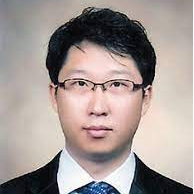Statistical Signal Processing: Theory, Methods and Applications
A special issue of Applied Sciences (ISSN 2076-3417). This special issue belongs to the section "Robotics and Automation".
Deadline for manuscript submissions: closed (25 April 2024) | Viewed by 7627
Special Issue Editors
Interests: statistical signal processing; optimal estimation filtering; wireless positioning systems and target tracking systems; fault detection, identification and tolerant systems
Special Issue Information
Dear Colleagues,
Through the years, problems addressed in the statistical signal processing field, a research area that broadly focuses on analyzing, modifying, and synthesizing signals such as sound, images, and scientific measurements, have become increasingly challenging. In addition, the received or measured signals are usually disturbed by environmental or intentional interferences, e.g., noise, electricity, and occlusion; therefore, the problem of filtered estimating some variables of interest from noisy observations is ubiquitous in the field of statistical signal processing. Consequently, new approaches, methods, theories, and tools are developed by the field’s community to account for modern complex, dynamic, and large-scale systems.
The main goal of this Special Issue is to introduce novel approaches from the statistical community to a wider signal processing audience, the focus including both theoretical and methodological aspects (introducing recently developed algorithms) and their applications, especially within the field of statistical signal processing. Prospective papers should be unpublished and present novel fundamental research, offering innovative contributions either from a methodological or an applications point of view.
Prof. Dr. Pyung Soo Kim
Prof. Dr. Bokyu Kwon
Guest Editors
Manuscript Submission Information
Manuscripts should be submitted online at www.mdpi.com by registering and logging in to this website. Once you are registered, click here to go to the submission form. Manuscripts can be submitted until the deadline. All submissions that pass pre-check are peer-reviewed. Accepted papers will be published continuously in the journal (as soon as accepted) and will be listed together on the special issue website. Research articles, review articles as well as short communications are invited. For planned papers, a title and short abstract (about 100 words) can be sent to the Editorial Office for announcement on this website.
Submitted manuscripts should not have been published previously, nor be under consideration for publication elsewhere (except conference proceedings papers). All manuscripts are thoroughly refereed through a single-blind peer-review process. A guide for authors and other relevant information for submission of manuscripts is available on the Instructions for Authors page. Applied Sciences is an international peer-reviewed open access semimonthly journal published by MDPI.
Please visit the Instructions for Authors page before submitting a manuscript. The Article Processing Charge (APC) for publication in this open access journal is 2400 CHF (Swiss Francs). Submitted papers should be well formatted and use good English. Authors may use MDPI's English editing service prior to publication or during author revisions.
Keywords
- statistical signal processing
- signal processing algorithms
- convergence of statistical signal processing and machine learning
- representation learning for statistical signal processing
- estimation and filtering
- adaptive filter and adaptive signal processing
- statistical modeling techniques
- measurement and observation






